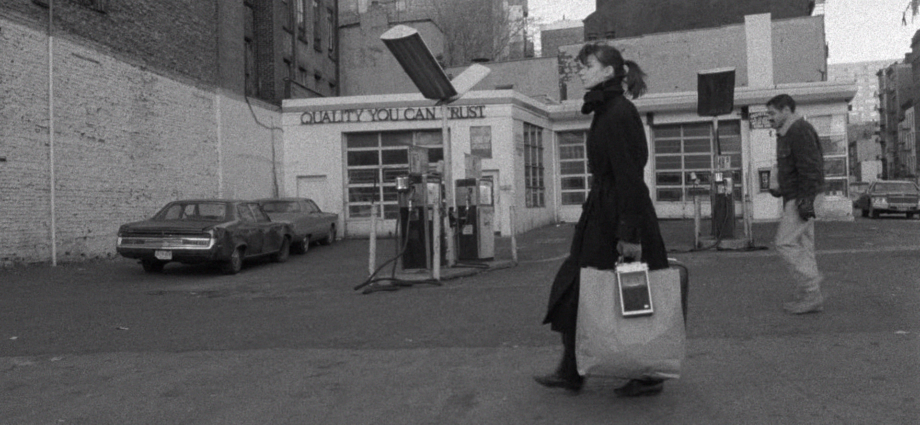Jim Jarmusch is a director one admires… Or gently laughs at, like when he treats us to films such as The Limits of Control, whose abstruse abstraction, made up of espressi, matchboxes and laconic discussions with a naked Paz de la Huerta in her hotel room, seem to boil down to a pure exercise in style.
Not so in Stranger than Paradise (1984), his first 35mm film. In black and white and with incredible grain, we find an unrecognizable, dirty, photogenic New York of the early 1980s.
In his shabby Lower East Side pad (actually Hoboken), Willie/Béla (John Lurie) receives a phone call from his Hungarian-born Aunt Lotte, who lives in Cleveland, Ohio. She is awaiting the arrival of her niece Eva (Eszter Balint), who is expected to land in New York. Hospitalized for ten days, however, Aunt Lotte is unable to accommodate Eva and asks Willie to take her in during this time.
Willie reluctantly accepts – which is followed by a famous sequence in which we see young Eva walking through the ravaged streets of the Big Apple, cassette player in hand, to the tune of Screamin’ Jay Hawkins’ “I Put a Spell on You“.
As critic Pauline Kael points out, the film’s “joke” lies in what Willie doesn’t do for his cousin: he “doesn’t offer her food or drink, or ask her any questions about life in Hungary or her trip; he doesn’t offer to show her the city, or even supply her with sheets for her bed”.
Instead of jumping on the expected commonplaces of origins behind the Iron Curtain, Jarmusch presents a subtle critique of American society through Eva’s eyes. On one hand, Eva speaks good English and is clearly inspired by Americana, with her love of the blues and her statement that Screamin’ Jay is her “main man“. On the other, she takes a wry look at Willie’s all-American habits, including beer, baseball, horse betting and shapeless, pre-cooked meals reminiscent of the cuisine in Repo Man (also released in 1984, starring Harry Dean Stanton). Here, it’s worth noting the scene in which Willie finds himself embroiled in an etymological debate about the origin of the term “TV Dinner”.
Shot in black and white with 30 minutes of film stock courtesy of Wim Wenders, Stranger than Paradise began life as a one-part short. After its presentation at the Rotterdam International Film Festival in 1983, Jarmusch added two subsequent parts and turned it into a road movie. It is tempting to see in this direction an influence from Wenders, his film stock endower and doctor of road movies, who signed, also in 1984, and also with Harry Dean Stanton, his famous Paris, Texas.
The film, which could have been expected to last several hours within four musty walls on the banks of the Hudson, succeeds brilliantly in combining the road with that characteristic rhythm of long shots that are always a little longer than necessary, a style we would find again with delight thirty-five years later in the third season of Twin Peaks.
From the New York pad to the Cleveland pavilion – with a heavy industrial complex as its neighbor, and from the hot dog restaurant to an improbable escape to the sea, Stranger than Paradise is not only a magnificent exercise in style that bears witness to its era, but also a film about America, youth, male-female relationships, the chore of being a small-time crook, the road, and quite simply the need to move: “toujours être ailleurs”.
Stranger than Paradise (1984)
Director: Jim Jarmusch
IMDB Record
Digital Blu-Ray/DVD restoration from Criterion

